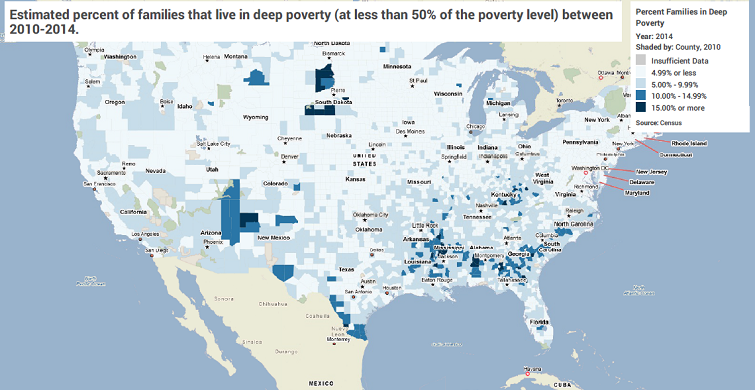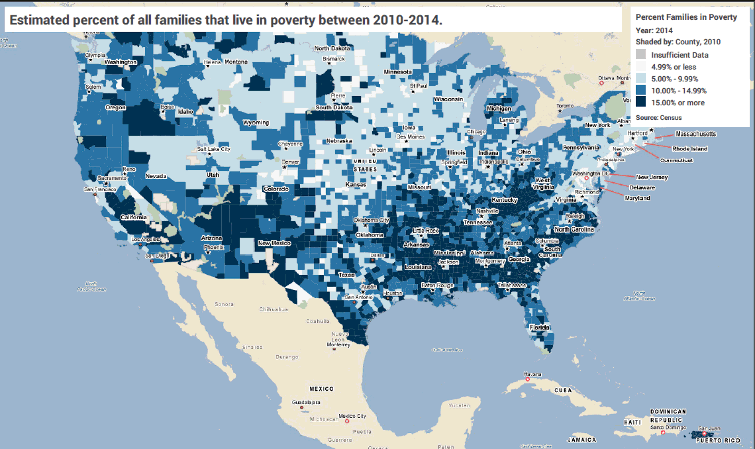Deep Poverty: Where Do Extremely Limited Income Families Live?

Data
Families in Deep Poverty
Source
Find on PolicyMap
- Incomes & Spending
- Poverty
- Families in Poverty
- Families in Deep Poverty
Over 3.5 million U.S. families live in extreme poverty; these families have income below 50% of the federal poverty line.
In 2014, deep poverty translated to less than $9,895 in annual income for a family of three. Families in deep poverty live on income of $45 – $75 per person per week, depending on family size (the poverty guidelines scale linearly by number of persons in the household). According to Census ACS 5-year estimates, median family income in the United States was $65,443 during this period, or $418 per person per week for a family of three. This new census data offers a more nuanced view of family income.
Looking at the poverty rate, some regional trends emerge. Generally, fewer families are in poverty in the Mid-Atlantic and Midwest, while elsewhere poverty rates above 10% are commonplace. Applying the same threshold to deep poverty reveals troubling pockets, many of which are communities of color. The highest rates of families in deep poverty are in Puerto Rico, where over 22% of all Puerto Rican families live in deep poverty. The Deep South, Rio Grande Valley, and Indian Areas are also home to pockets of concentrated deep poverty. The maps below highlight counties in dark blue where over 15% of families have income below the poverty and deep poverty guidelines:

However, these regional trends are only one side of the narrative of deep poverty. There are pockets of extreme poverty within most major cities. Even in Minnesota, which has one of the lowest rates of deep poverty in the nation (2.98%), there are 50 census tracts where over 15% of families have income less than 50% of poverty; 35 of these tracts are majority-minority tracts (csv download).
The presence of deep poverty can be seen through many lenses: it can be evidence of a lack of local job opportunities or regional transit opportunities to get people to jobs elsewhere. Policymakers can look to areas of deep poverty to see where the safety net could be in particular need of strengthening. Extreme poverty is a challenging, multifaceted issue, but it demands attention. Research from many eminent policy centers and think tanks shows that living in deep poverty can be an immensely destabilizing force on a family, compounded by joblessness and severely limited access to quality housing and schools.